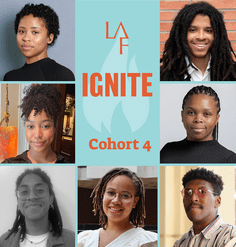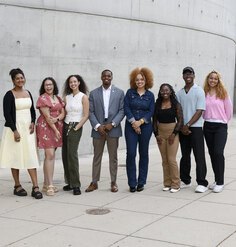Fresh Eyes for Play Environments: Kate Tooke
July 9, 2012
After receiving her MLA from the University of Massachusetts Amherst, 2011 National Olmsted Scholar Kate Tooke planned to use the $25,000 award to build on her thesis work and develop a design toolkit focused on making ecosystem services transparent, educational and sustainable features of urban schoolyards. We checked in to see how the project and her life have evolved since.
Tell us about what you’ve been doing since graduation.
During the final year of my MLA program I worked part-time at Dodson & Flinker, Inc, a small landscape architecture and planning office in western Massachusetts. When I graduated, I continued my work full time with one exceptional twist: to the firm’s general repertoire of site design and village planning projects we suddenly added several public school projects. Immediately I was immersed in the design applications of my research on children’s outdoor environments. I worked (and learned) throughout the summer and early fall until one morning, with great joy, we welcomed our daughter Tessa into this wide and wonderful world.
I had HUGE plans for maternity leave: I was going to publish my thesis as a journal article, populate the framework of my design toolkit, and begin a book collaboration project with the Boston Schoolyard Initiative. Ha! Becoming a parent is a truly humbling experience. Life turned upside down in those first few months: I snatched odd moments to read, write and sketch, but my larger research and design goals became no more tangible. Slowly I learned which parts of my research I could do with Tess, rather than in the limited space around her. In the late fall we began to explore playgrounds and schoolyards together. Tess looked on from the comfort of her snuggly while I snapped photos and jotted down ideas. We visited children’s environments throughout the Pioneer Valley, and then ventured further afield to the Boston area. In late December, we travelled to England to visit family and walked the length of London fascinated by the diversity of play features we encountered.
I returned to work in January with a new wealth of information and inspiration. Currently on our drafting boards are schematic designs for two new public elementary schools, and our first nature playground at an urban elementary school in Westfield, MA has just gone out to bid.
How is the development of your urban schoolyard design toolkit going?
When I first learned that I had received the 2011 National Olmsted Scholarship, I met with dozens of friends, advisors and professional contacts to discuss my urban schoolyard design toolkit idea. Overwhelmingly I heard: you have envisioned enough to fill several lifetimes — narrow your focus! Although I still hope my life will be long enough to flesh out my full concept for the toolkit and its organizational home, I have also developed a healthy respect for the power of narrow foci. My current work looks specifically at hydrology on school campuses — how do we collect, clean and infiltrate stormwater in a way that is educational, playful and sustainable in urban environments. I’m exploring issues of recycling stormwater in play features, constructing outdoor laboratories for students to test hydrological concepts or infiltration materials, and managing the liability of constructed wetlands on urban school campuses. Some of these ideas are being tested as small experiments in our design work at Dodson & Flinker, and in the near future, I’m planning to organize the ideas on an interactive website. Stay tuned!
What other irons do you have in the fire?
The Boston Schoolyard Initiative (BSI), an organizational partner in my thesis research, has recently shifted gears from active schoolyard renovation to documenting its 15 years of work in the city. I’ll be collaborating with them on a publication which will celebrate what they have achieved and lay out a framework for other cities to follow. It’s an honor simply to be involved, but I also believe that the experience will provide valuable learning about how to structure my design toolkit for eventual publication. In the meantime, I continue to work at creating play environments and to play whenever and wherever possible.
Any opinions expressed in this interview belong solely to the author. Their inclusion in this article does not reflect endorsement by LAF.










